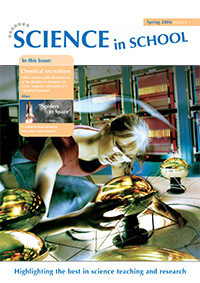DNA interactive
This award-winning yet inexpensive educational DVD contains numerous short interviews with scientists, many of them Nobel laureates, who have played a major role or continue to work principally in human molecular biology.

Showing 10 results from a total of 30
This award-winning yet inexpensive educational DVD contains numerous short interviews with scientists, many of them Nobel laureates, who have played a major role or continue to work principally in human molecular biology.
Dean Madden and John Schollar from the National Centre for Biotechnology Education at the University of Reading, UK, suggest a recipe for a cocktail containing deoxyribose nucleic acid (DNA.) This drink has novel features of considerable biological interest.
Dean Madden from the National Centre for Biotechnology Education at the University of Reading, UK, describes how DNA was discovered - and how it can be simply extracted in the classroom.
The incidence of diabetes is on the rise, in both the developed and developing worlds. Klaus Dugi, Professor of Medicine at the University of Heidelberg, Germany, discusses the causes, symptoms and treatment of diabetes.
Scientists working at the Institut Laue-Langevin (ILL) and the University Joseph Fourier in Grenoble, France, have discovered a crystal that appears to defy the laws of physics. Giovanna Cicognani from ILL reports.
Films about science or even pseudo-science can be powerful tools in the classroom. Heinz Oberhummer and Markus Behacker from the Cinema and Science project provide a toolkit for using the film Deep Impact.
Would you know how to turn a bucket into a seismograph, how to make a scale model of a DNA double helix from cans and bottles, or how to simulate a human eye with the help of a shampoo bottle? Barbara Warmbein from the European Space Agency in Noordwijk, the Netherlands, finds out.
What inspires someone to be a spacecraft designer? And how can you become one? Russ Hodge from the European Molecular Biology Laboratory in Heidelberg, Germany, interviews Adam Baker and reveals all.
There is a natural way to tell a tale: begin at the beginning and end at the end. Standard biographies, for example, start with the forebears, in many cases the grandparents, and end with the protagonist's death.
DNA interactive
A cocktail of nucleic acids: celebrating the double helix
Discovering DNA
Diabetes mellitus
Defying the laws of physics?
Deep Impact
Science teachers take centre stage
The sky’s the limit
The Ancestor s Tale: A Pilgrimage to the Dawn of Life, By Richard Dawkins
